Termoli, the liveliest city in Molise, has great beaches and a beautiful sea. But what if we say there's so much more? Let's find it out!
One of the most attractive towns on the Adriatic Coast is indeed Termoli, in the region of Molise, a sensational place for its long sandy beaches, crystal-clear sea and stupendous historic center.
If walking through its bright tiled streets might remind of Puglia, actually Termoli retains a peculiar character in its own, maybe a bit wild, typical of sea fortresses.
In fact, its historic core is a fortified citadel, set on the top of a promontory overlooking the Adriatic Sea. The view from up there is breathtaking on any occasion, when the summer sun bakes your face and when the winter wind whips.
Termoli is truly a place to love at any time of the year. Elegant and lively, it carries within itself more than one reason to attract its visitor. In this article, we are happy to share with you at least 5 of them.

5. Castello Svevo of Termoli, an appointment with history
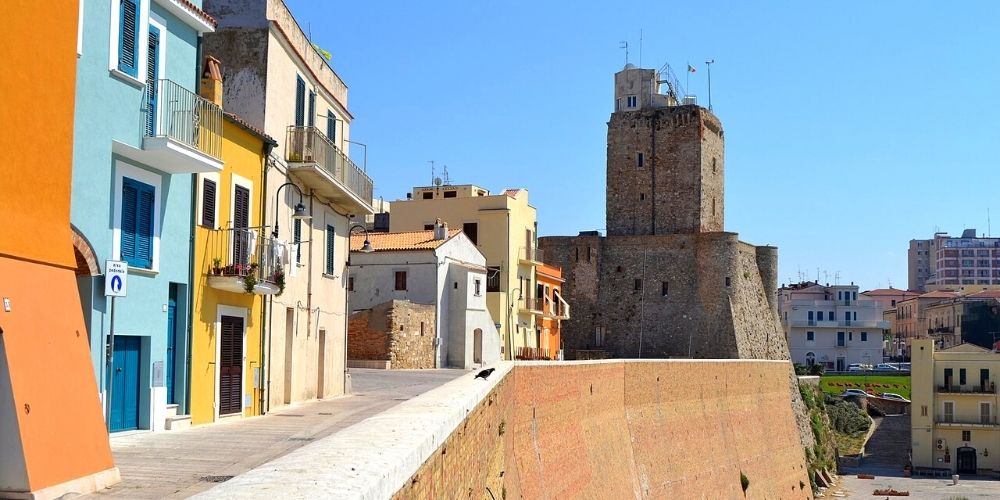
As we said earlier, Termoli has wonderful beaches, but they are certainly not the only reason to plan a trip to this beautiful town in Molise.
What is surprising on arrival is the grandeur of the Swabian Castle (Castello Svevo in italian) that literally embraces and protects the historic center of the town. It is located in a strategic position, to say the least: on one side the ancient center perched on top of the promontory, on the other the mainland and, finally, the sea. Built on the ruins of Norman fortifications, it was commissioned by Frederick II of Swabia around the middle of the 13th century, along with a compote of other fortifications scattered throughout southeastern Italy, as far as Sicily. One of the most famous examples of these constructions is certainly Castel del Monte in Apulia.
The Swabian Castle of Termoli tells a story of conquest. With the fall of the Roman Empire, in fact, the city gradually fell into different hands. The Lombards, the Franks, the Normans and, finally, the Swabians. Each of these people left something behind, giving us the privilege to enjoy such an unforgettable view.
In this egregious as well as unadorned sandstone and limestone building, which gives it a warm ochre color, today is the headquarters of the Air Force Weather Station, but it can be visited upon request. In any case, it is impressive just to approach it at any time of day and be awed by its mighty bulk.
4. The elegance of the old town of Termoli, lying on the promontory
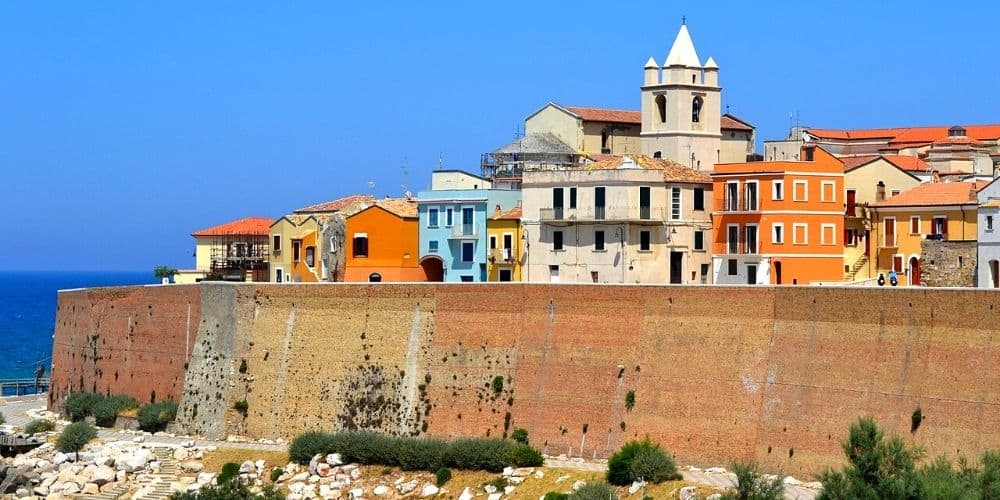
There are two ways to get to the picturesque old town of Termoli, one of which is undoubtedly much more adventurous. The first way is the more convenient one, simply needing to get to the Swabian Castle. From there, going straight ahead it's possible to take one of the narrow streets that lead to the heart of the town.
To access the other way, however, you have to walk to the harbor and from there, follow the road that leads toward the headland. When the road seems to stop and there seems to be nothing but spaces to park, somewhat hidden is a spiral staircase. It is quite a few steps, but there are handrails that accompany the entire ascent. It is especially nice to climb up toward the village as the view of the harbor and the coast opens up.
Whichever way one goes, the hamlet is truly fascinating, set on a rocky outcrop some 21 meters above sea level. Here, among very characteristic small squares and alleys, there is also the Vico Il Castello (the Rejecélle, in Termolese), one of the narrowest alleys in Europe: it is just 41 centimeters wide and 7.88 meters long.
Until 1847 all the population lived here, inside the walls. It was only after that that Ferdinand II Bourbon ruled that it was possible to expand the city outside. Thus was born the more modern center of Termoli: splendid and elegant, full of bars, restaurants and a constant coming and going of inhabitants and tourists.
3. The newly renovated Marina
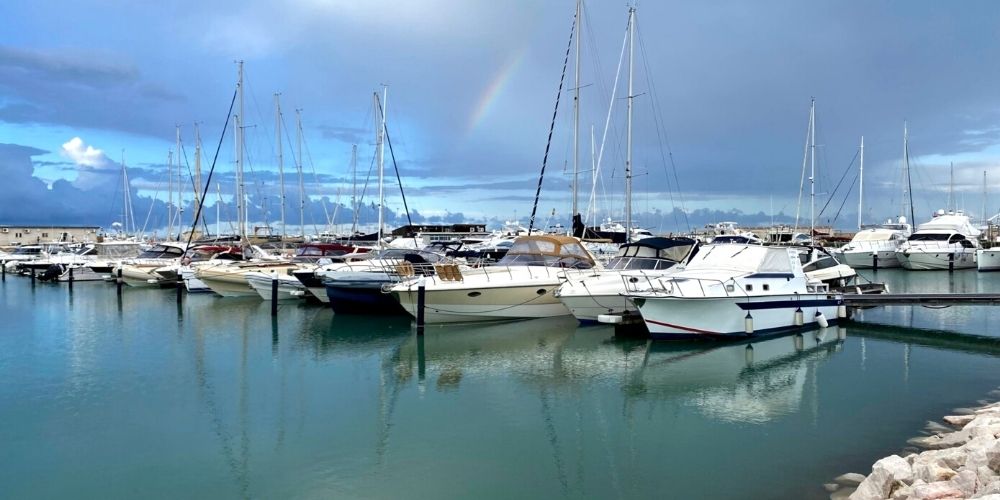
A vast port area embraces the southern side of the town of Termoli. From here ferries depart for the nearby Tremiti Islands, which can be reached more quickly from here than from any other port, and, at certain times of the year, also some connections to Croatia.
It is worth a walk here, however, regardless of one's desire to embark, especially in the late afternoon. The marina area, in fact, has recently been renovated and expanded, so much so that some town festivals are organized right here. To complete the offer, there are also a few bars and restaurants, as well as offices that organize private boat excursions. In any case, the view one has of the blue Adriatic Sea from here is priceless.
Continuing then in a southerly direction, you leave the center of Termoli behind you and approach the mouth of the Biferno River. Beyond lies the village of Campomarino with its beautiful beach.
2. The trabucchi of Termoli, a monumental heritage of the Adriatic Sea
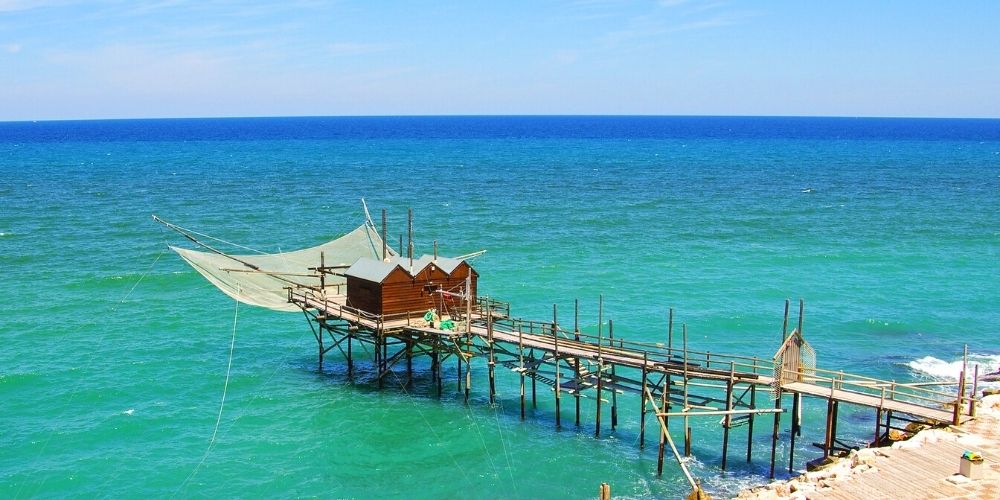
So far, in the course of our virtual walk, we have dwelt mainly on the south coast, only because we wish to dedicate a separate paragraph to the north coast.
Those who take for the first time the road that leads from the Swabian Castle to the old town will certainly have noticed strange wooden constructions that from the shore push a few meters toward the sea. They are called Trabucchi, but also Trabocchi, or even Bilance, and they seem to have originated from a population, also devoted to the sea, the Phoenicians.
In fact, these constructions, which are found mainly from Pescara to Bari, in ancient times allowed people to fish even in bad weather, when boats could not go out to sea.
How are they made? These fishing machines are made from a thick palisade driven between the rocks, ending in a platform connected to the mainland by a gangway. Two masts stretching out over the water hold a rectangular net, which, through a winch, is then lowered into the water. They are typically constructed with Aleppo pine wood, not only because it is an almost inexhaustible material in this part of Italy, but also because it is resistant to salt spray.
Without any doubt, this is a fascinating sight that can be admired from the top of the ancient village.
1. Termoli beaches, among equipped lidos and natural oasis
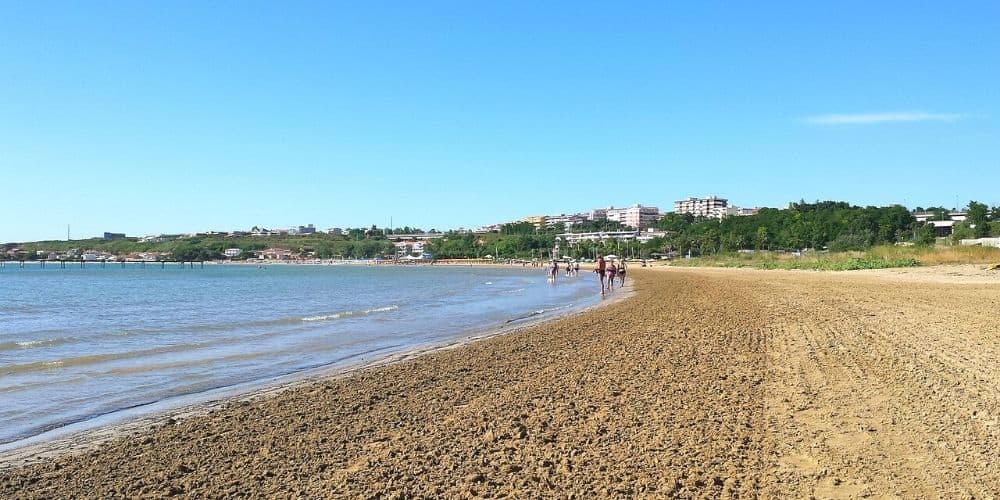
The splendor of the downtown we have told so much about in this article can only be enhanced by the beauty of the beaches that embrace, from both north and south, the small promontory of Termoli.
Sant'Antonio in Termoli, one of the most beautiful beach of Molise
North of the old town, the shoreline of Sant'Antonio stretches out. Partly because of its location, at the foot of the Swabian Castle, and partly because of the panorama that opens onto the Molise coast, it is one of the beaches most chosen by Termoli inhabitants.
In the background of the beach, to the south, one can see those very trabucchi mentioned earlier.
Rio Vivo beach, perfect for water sports
South of the village, there is another town beach, right by the marina. This place, in addition to the exceptional view, is favored by anyone who wants to practice some water sports.
In particular, thanks to winds that are favorable much of the time, it is an ideal place for sailing.
An advice for your trip to Termoli: Petacciato Marina
A few kilometers north of Termoli is Petacciato Marina, a small village separated from the sea by a thick pine forest that runs along the shoreline for several kilometers.
Beyond the shady path opens Petacciato Beach, a very long and wild nature oasis that leaves room for a wide variety of activities in complete solitude. From the tourist office also starts a path shrouded in vegetation that is a paradise for all bird watchers.
In short, the Molise coast with its lively town of Termoli really has a variety of activities and attractions to choose from. And let's not forget that between a dip and a visit, its cuisine will also be something that will literally delight your senses!



